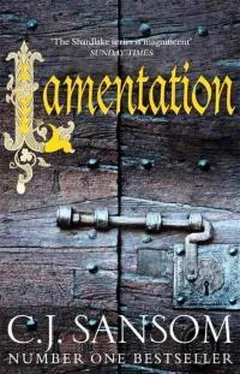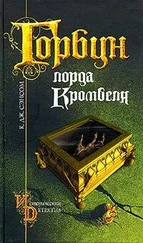IN 1546, ENGLAND’S ruling elite, as well as the common people in London especially, were split between those sympathetic and those hostile to religious reform. It was a matter of degree, and many people either kept their heads down to avoid trouble, or, among the ruling classes, bent with the wind for political advantage. And the wind blew very fiercely in in the mid-Tudor period, as Henry VIII, following the split with Rome in 1532-3, lurched between traditional and radical religious policies for a decade and a half.
Most of those in the reforming camp were not social radicals, except for one group, which became a bogey for the traditionalists: the Anabaptists. In Holland and Germany various sects had grown out of Luther’s Reformation, and the Anabaptists (or adult Baptists) believed in returning to the practices of early Christianity. These beliefs included holding goods in common, which meant overthrowing the feudal ruling classes – although they seem to have been more ambivalent about the rising merchant classes. When they took over the German city of Münster in 1534, the local Protestant rulers joined with Catholics to exterminate them, but the Anabaptists continued as a persecuted minority in north-western Europe. A very small number fled to England, where they may have made contact with the survivors of the fifteenth-century Lollards, but were quickly caught and burned. In England they were very few; but a Dutch Anabaptist coming to London in 1546 and forming a small group there would have been possible.
Of course, like the group in Lamentation , these men would have been vulnerable to infiltration by official spies, of which there were plenty. The slowly emerging world of London printing (at this period most books were imported from the Continent) was watched by the authorities, with printers often being reformers, and some having contacts with exiled English polemicists in Germany and the Netherlands, of whom John Bale (a religious, though not a social, radical) was the most feared. And Anne Askew, hiding in London in 1546, was captured by informers – and later tortured in the Tower by Wriothesley and Rich. She was one of many brought before the Privy Council for questioning during the 1546 heresy hunt; although, as Shardlake observes in my novel, it would have been very unusual for an accusation as weak as Isabel Slanning’s in the story to go that high.
LONDON IN 154 6 was a tumultuous, violent, sectarian and impoverished place. It was only a year since the country had faced a serious threat of invasion. The King’s French war had, literally, bankrupted England – Continental bankers were refusing to lend Henry any more money – and the debasement of the coinage continued apace, to the impoverishment of the lower classes especially. The harvest of 1546 seems to have been a good one, which was probably just as well for the elite; bad harvests later in the decade contributed to large-scale rebellions.
WHITEHALL PALACE, located on the fringes of the city, was an utterly different world. The palace, seized by Henry VIII from Cardinal Wolsey, was extensively expanded and enriched by the King, although its development was restricted as it was bounded on the east by the Thames, and on the west by the great thoroughfares of Whitehall and King Street, leading from London to Westminster. The problem was solved by building the recreational side of the palace on the western side of the roadway, and bridging the road with the magnificent Holbein Gate, where Henry had his private study. The two great paintings mentioned in the book – one showing Henry and Jane Seymour with the King’s father Henry VII and his Queen, and the other showing Henry and Jane Seymour (by that time long dead) with Henry’s three children, and two figures in the background who are believed to have been the royal fools Will Somers and Jane – were highlights of the magnificent decoration of the palace. Scrots’s portrait of the young Princess Elizabeth was painted at this time, and can be seen in the National Portrait Gallery in London. Baynard’s Castle, which like Whitehall Palace no longer exists, was home in 1546 to the Queen’s wardrobe as well as to her sister Anne and brother-in-law William Herbert.
THE ELITE GOVERNING ENGLAND at the end of Henry VIII’s reign was divided by religion, but it was also divided into family blocs. Catherine Parr, like all Henry’s queens, placed family members in positions of importance within her household, such as Lord Parr and Mary Odell, while her brother-in-law William Herbert was an important member of the King’s private chamber, and her brother William Parr took a place on the Privy Council, the King’s executive council, as well as the earldom of Essex.
This would now be called nepotism, but the Tudor view was entirely different – people were expected to advance members of their own family networks. So far as the royal court was concerned, this led inevitably to distant relatives and family hangers-on making their way to court in the hope of a place in royal service, as described in the book.
The Parrs were all on the reformist side, and their family loyalties seem to have been exceptionally tight; more so than their reformist allies and potential political rivals, the Seymours, the family of Prince Edward’s mother Jane Seymour. Thomas Seymour was a drag on his brother Edward, now Lord Hertford. Nonetheless Lord Hertford was close to Henry and had considerable political ability, although when he actually rose to the top after Henry’s death he proved inadequate for the job. Meanwhile, during 1546 William Paget, the King’s Secretary, appears to have moved from being a protégé of Bishop Gardiner’s to an ally of Lord Hertford.
AT THE SAME TIME a young man named William Cecil was beginning to make his career on the fringes of politics. I have invented his position on Queen Catherine’s Learned Council, although he was certainly a friend of the Queen, and moreover wrote the preface to Lamentation of a Sinner when it was published in 1547. During that year he first appears on the record as Edward Seymour’s secretary, beginning the meteoric rise which was to culminate, in 1558, when he became chief adviser to Elizabeth I. Edmund Walsingham, meanwhile, was the uncle of Elizabeth’s famous future spymaster, Thomas Walsingham.
THE FACT THAT all these people knew each other is indicative of just how tiny the Tudor elite was – essentially a group of titled country landowners, though increasingly open to men from the gentry and merchant classes, who sought positions at court to amass wealth and, like Rich and Paget, went on to create their own great estates. Paget and Rich were both lawyers of undistinguished lineage but great ability, who were first chosen for service by Thomas Cromwell – as Shardlake observes, six years after his death much of the political elite still consisted of men whom Cromwell had advanced. ‘Gentleman’ status, meanwhile, was everything for young men like Nicholas Overton, who guarded it jealously; allowed to wear swords and colourful clothes of rich material forbidden to the common populace, they were brought up to see themselves as quite different from the common run.
FOR THE VISIT of Admiral d’Annebault in August 1546 I have followed closely the short account in Charles Wriothesley’s Chronicle . As one traces the ceremonies, one realizes their huge scale. Henry played a prominent role, but this was to be his last hurrah. Five months later he was dead. Greeting the admiral near Hampton Court was also Prince Edward’s first public appearance.
Catherine Parr and the Politics of Henry VIII’s Last Months – An Interpretative Essay
Historians have long puzzled over the huge upheavals in English politics during the last months of Henry VIII’s life. The source material is fragmentary, mainly scattered correspondence and ambassadors’ reports, and the reliability of one major source regarding Catherine Parr, John Foxe’s Book of Martyrs , has been called into question. Historians are divided over Foxe; he was a radical Protestant who wrote, highly polemically, about the sufferings of Protestant martyrs in the years before Elizabeth I ascended the throne. Some have said that Foxe is too biased to be credible, adding that where Catherine Parr is concerned he was writing seventeen years after the event he described. Others respond that Foxe was meticulous about trying to get his facts right, whatever gloss he put on them. I tend to agree with those who say that Foxe was an honest and assiduous gatherer of witness testimony, while also agreeing with pretty much everyone that his chronology was notoriously unreliable – of which more below.
Читать дальше








![К Сэнсом - Стенание [другой перевод]](/books/432043/k-sensom-stenanie-drugoj-perevod-thumb.webp)
